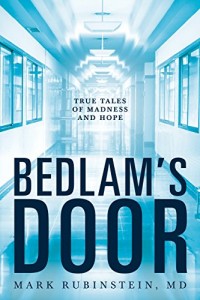Tess Gerritsen was a physician and Board-certified internist before turning her talents to writing. The Rizzoli and Isles series, feat uring a homicide detective and medical examiner, propelled Tess to the status of an internationally bestselling author; and was the foundation for the popular television series of the same name.
uring a homicide detective and medical examiner, propelled Tess to the status of an internationally bestselling author; and was the foundation for the popular television series of the same name.
Tess has written standalone medical and crime thrillers; and her books have been published in 40 countries.
I know A Secret involves two separate homicides with unrelated victims. In both cases, the bodies bear strange wounds, yet the actual causes of death are unknown. Concurrently, Jane is struggling to save her mother from a marriage that threatens to bury her, while Maura is grappling with the imminent death of her own mother—the infamous serial killer Amalthea Link.
The investigation of the two homicides leads to a secretive young woman and just when Rizzoli and Isles think they’ve cornered a fiendish predator, the long-buried past surfaces and threatens to engulf everyone.
When we last talked, you described how your standalone novel “Playing with Fire” arose from an unusual experience you had. What led to the idea for “I Know A Secret”?
This book was also based on a trip to Italy, during which I visited a number of art museums and saw many Renaissance paint ings. I had read the book, How to Read a Painting, which taught me how to look at a painting and recognize the characters depicted.
ings. I had read the book, How to Read a Painting, which taught me how to look at a painting and recognize the characters depicted.
For example, Saint Sebastian was always depicted with arrows in his chest; Saint Lucy with her eyes in her hands. These symbols denote who these figures are.
As a crime writer, I began thinking: What if a killer set up his crime scenes the way a Renaissance painter would have arranged his paintings? It struck me as a fascinating modus operandi—a killer would leave symbols for somebody to interpret.
While “I Know A Secret” isn’t a horror story, there’s a good deal about horror stories and movies in the narrative. Tell us about that.
When I was growing up, I loved horror stories. My mother loved them, too, and she took me to every horror movie ever made.
My son and I made a horror film, Island Zero, and it’s currently making the rounds of the film festivals. Being involved in indie-film making with a horror movie, combined with a life-long enjoyment of the genre, gave me the idea for Jane Rizzoli to be faced with the first victim being a horror-film producer; and the final clue leading to the identity of the killer deriving from a horror film.
In addition to medical forensics, “I know A Secret” involves plenty of psychology about child abuse and memories. Will you talk about that?
I became interested in false memory syndrome—a condition in which someone believes something happened when it didn’t. Yet, it’s “remembered” vividly. Elizabeth Loftus did research which showed you can implant false memories in about twenty-five percent of adults.
She gave the subjects three real memories based on what their families had told her, and then provided them with one false memory. She asked the subjects to describe these four incidents from their childhoods in greater and greater detail as the weeks went on. By the end of the experiment, some of the subjects couldn’t tell which were the true memories and which one was false.
In the late eighties and early nineties, there was a widespread belief that satanic circles were committing sexual abuse of children. People were being put on trial for nothing. I wanted to explore that issue in the novel.
Near the end of “I know A Secret,” Maura and Daniel are getting together once again. Do you have plans for them in the future?
I think I’ve set it up as an imperfect love. But, it is love, and that’s the way so many relationships are. Nothing is perfect. This is the happiest they’re going to be.
Which character in “I know A Secret” was most compelling to write?
Holly was very challenging for me to write. I’d never before delved into the psychopathic side of a character’s personality. Holly just views other people as being usable and disposable. She has no sense of empathy for anyone, and I found that difficult to write.
How do you manage to keep the Rizzoli and Isles series fresh after so many books?
I think what keeps it fresh is the two main characters are always evolving. Things happen to them and to their families, and they keep moving forward. For Jane, it’s to see what’s happening with her brother and parents. I also love the fact that her mom—who’s not a spring chicken—can still have a romance, despite her age.
The other thing that keeps it fresh is that every mystery comes from a different place—from an inspiration that’s unique. As I said, this one arose from Italian Renaissance paintings.
If you could read any novel again as though reading it for the first time, which one would it be?
One of the books I remember so well is Larry McMurtry’s Lonesome Dove. I was so immersed in that story, I wish I could read it again as though it were for the first time. There are several books like that. I wish I could re-read The Lord of the Rings, as though for the first time. It’s an interesting thought: maybe if I reread some of these books, I’d probably discover new things about them.
For me it would have been “Watership Down.”
Oh yes. What a creative book. Can you imagine getting into the head of a rabbit? It was a fantastic book.
Will you complete this sentence: Writing novels has taught me________________?
It’s taught me to pay attention to my emotions. For me, what keeps a book going forward is the fact that characters aren’t settled. There’s something distressing about whatever situation they’re in. In order to write a well-paced novel, you must be cognizant of what’s bothering these people. Or, if I were in that situation—what would be bothering me? What would make me want to fix something?
In order to be in touch with my characters’ emotions, I have to be in touch with my own.
What’s coming next from Tess Gerritsen?
I’m working on a weird and different book. It’s an erotic ghost story.
It often drives my publisher crazy that I’ll jump from one genre to another. The book business wants an author to write in a single genre—the one in which you’re best known.
Well, when you’re Tess Gerritsen, you’ve earned the right to write what you want.
[Laughter] When you’re as old as I am, you realize there’s only a certain amount of time left to tell the stories you want to tell. [More laughter].
Congratulations on writing “I Know a Secret,” a fast-paced, dark, edgy mystery/thriller filled with unremitting suspense.







 Patricia Cornwell is the internationally bestselling and award-winning author of 33 books, the most famous and widely read being the 22 novels of the “Kay Scarpetta” series.
Patricia Cornwell is the internationally bestselling and award-winning author of 33 books, the most famous and widely read being the 22 novels of the “Kay Scarpetta” series. Recently, I read
Recently, I read 